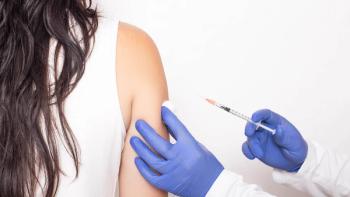
- BioPharm International-07-01-2018
- Volume 31
- Issue 7
Early Development Obstacles of Biosimilars and Biobetters
Biosimilars and biobetters face developmental challenges to achieving commercialization.
The complexity of biosimilar and biobetter molecules leads to developmental issues that stall their commercialization, especially in the United States.
BioPharm International spoke with Paul A. Calvo, PhD, director in the Biotechnology & Chemical Practice Group at Sterne, Kessler, Goldstein & Fox, and Gregory K. Bell, group vice-president and life-sciences practice leader at Charles River Associates, about the regulatory and legal issues associated with bringing recent biosimilars and biobetters to market.
Biosimilars verus biobetters
Understanding the difference between biosimilars and biobetters is crucial when tackling issues associated with their development. “First, it is important to define terms,” explains Bell. “A biosimilar is a generic version of a biologic, while the definition of a biobetter is more strategically significant. Some may characterize it as a lifecycle strategy from the innovator of a biologic (e.g., pegylation) for longer duration or an innovation to yield a subcutaneous version of an infusible. Perhaps the more interesting definition of a biobetter, however, is a biosimilar that is ‘better’; in other words, not the result of a lifecycle strategy from the innovator.”
“Bioproduction methods are inherently challenging and expensive,” notes Calvo. “In order to have biosimilars and biobetters compete in the marketplace, strategies to lower cost of development will be necessary. In the US, a hurdle results in individual states passing their own legislation regarding biosimilars. This could impact market uptake.”
What to consider for development and commercialization
When it comes to these biologics, it is important to assess the type and significance of development and commercialization challenges, observes Bell. “Two types of products are considered based on mode of administration: self-administered (often subcutaneous) or physician-administered (often infused). The type of approval also needs to be considered, either similarity (with or without indication extrapolation, meaning with or without an approval based on a showing of biosimilarity in a principal indication or inferred for other indications of the biologic) or interchangeability, typically meaning substitutable without physician approval (currently not available in the US).”
Bell believes that development challenges tend to be most manageable for biosimilars without interchangeability. “This is because the clinical trial requirements are presumably less stringent than for interchangeability. The development challenges for the more strategically interesting definition of biobetters are higher because one must get beyond biosimilarity to show the ‘better’ aspects for the label. The consequent commercial upside, of course, could be higher and come with its own form of market exclusivity.”
Commercialization hurdles are likely to be higher for a product that is administered by a physician, according to Bell. More specifically, marketing the product to various physicians and providing the support services necessary for the stocking of the product in those physician offices will prove particularly challenging. “These challenges are likely to be elevated if there is only indication extrapolation to the extent that physicians are not necessarily on-board with a class-effect characterization. The indication extrapolation issue is likely to be exacerbated if different specialties are responsible for prescribing the product for extrapolated indications, such as gastroenterologists and dermatologists for anti-tumour necrosis factor (TNF) products such as Enbrel, Humira, and Remicade.”
The commercialization challenges are compounded for biobetters, but the payout might just make these obstacles worth the trouble. “The biobetter will have all of these challenges plus the additional marketing requirement to raise awareness of the ‘better’ feature, [as well as] to encourage physician and patient trial of the ‘better’ feature and then to habituate usage of the biobetter,” notes Bell. “As a result of those more significant commercialization challenges, the consequent upside from successfully addressing those challenges is likely to be notably higher for biobetters.”
“Patient-support services represent a last commercialization hurdle for biosimilars and biobetters,” Bell adds. “Many biologics provide or require significant patient support services-from insurance benefit approval to education on self-administration and living with the condition. Biosimilars and biobetters will need to be able to provide the patient-support services that are in demand, both from the perspective of the physician office and the patient.”
Legal and regulatory issues
Intellectual property (IP) will likely be the key issue when bringing biosimilars to market, especially in the US, according to Calvo. “Not only will developers need to contend with patents that cover the composition and its use, but patents that cover methods of producing the biologics are taking on increased importance as originators try alternative strategies to gain additional patent protection.”
This issue goes beyond patent thickets, adds Bell. “The trade secrets and learning economies associated with biologics production are likely to be much more significant than for small molecules. For example, the cell lines and other production processes associated with the manufacturing of biologics may be more complex to manage than the production processes associated with many small-molecule products. Further, unlike [FDA’s] Orange Book in the US, there is no ready-made listing of the patents protecting composition-of-matter or method-of-use for biologics. As a result, it may be considerably more difficult for biosimilars and biobetters to navigate over and around the IP hurdles associated with biologics.”
However, there may be a flipside from these same set of challenges. “The IP challenges that are associated with biologics may also lead to opportunity for biosimilars,” says Bell. “For example, there may be IP associated with the manufacturing and characterization of the biosimilar that will help to constrain entry and increase profitability as compared to generic versions of small molecules.”
Looking ahead
The future of biosimilar/biobetter market success could come back full circle to issues involving their definitions, notes Bell. “Generally, the market potential for a valued ‘better’ feature is likely to mean that a biobetter will have a market advantage over ‘just’ a biosimilar. ‘Just’ a biosimilar, however, should be less expensive to develop, able to get to market more quickly, and, if interchangeable, could be significantly less costly to market. Conversely, these very attributes are also likely to be correlated with ease of entry, meaning more potential competition from other biosimilars and therefore, reduced market potential.
Calvo sees the future a bit differently. “The market potential will likely be greater for a biosimilar than a biobetter. The biosimilar has the benefit of similarity to a known, approved product. A biobetter (as the name suggests) will need to be better than the originator. If a biobetter is not significantly better, the marketplace may revert to the originator/biosimilar compounds because they are known commodities with a known efficacy profile.”
“There is likely to be more market potential associated with a valued biobetter than an interchangeable biosimilar,” Bell explains. Because of the more stringent requirements expected for interchangeability as opposed to ‘just’ biosimilarity, it is to be expected that the production process for an interchangeable biosimilar would be more easily controlled and thus less reliant on IP, including trade secrets and learning economies. As a result, more entry would be expected for an interchangeable biosimilar, tending to reduce the long-term marketpotential.”
Disclaimer: The views expressed by Gregory K. Bell herein are the author’s and not those of Charles River Associates or any of the organizations with which the author is affiliated.
Article Details
BioPharm International
Vol. 31, No. 7
July 2018
Pages: 47–48
Citation
When referring to this article, please cite it as A. Lowry, "Early Development Obstacles of Biosimilars and Biobetters" BioPharm International 31 (7) 2018.
Articles in this issue
over 7 years ago
Seeking Regulatory Adviceover 7 years ago
Be Quick, But Don’t Hurryover 7 years ago
Biopharma Seeks Balanceover 7 years ago
Industry 4.0 in Biopharmaceutical Manufacturingover 7 years ago
Biosimilars Raise Manufacturing and Regulatory Challengesover 7 years ago
Advances in Analytics for Bioprocessingover 7 years ago
A Look into the Future of Biopharmaceutical Qualityover 7 years ago
Regulating Biologicsover 7 years ago
The Challenge of Disruptive Technologies in BioprocessingNewsletter
Stay at the forefront of biopharmaceutical innovation—subscribe to BioPharm International for expert insights on drug development, manufacturing, compliance, and more.




